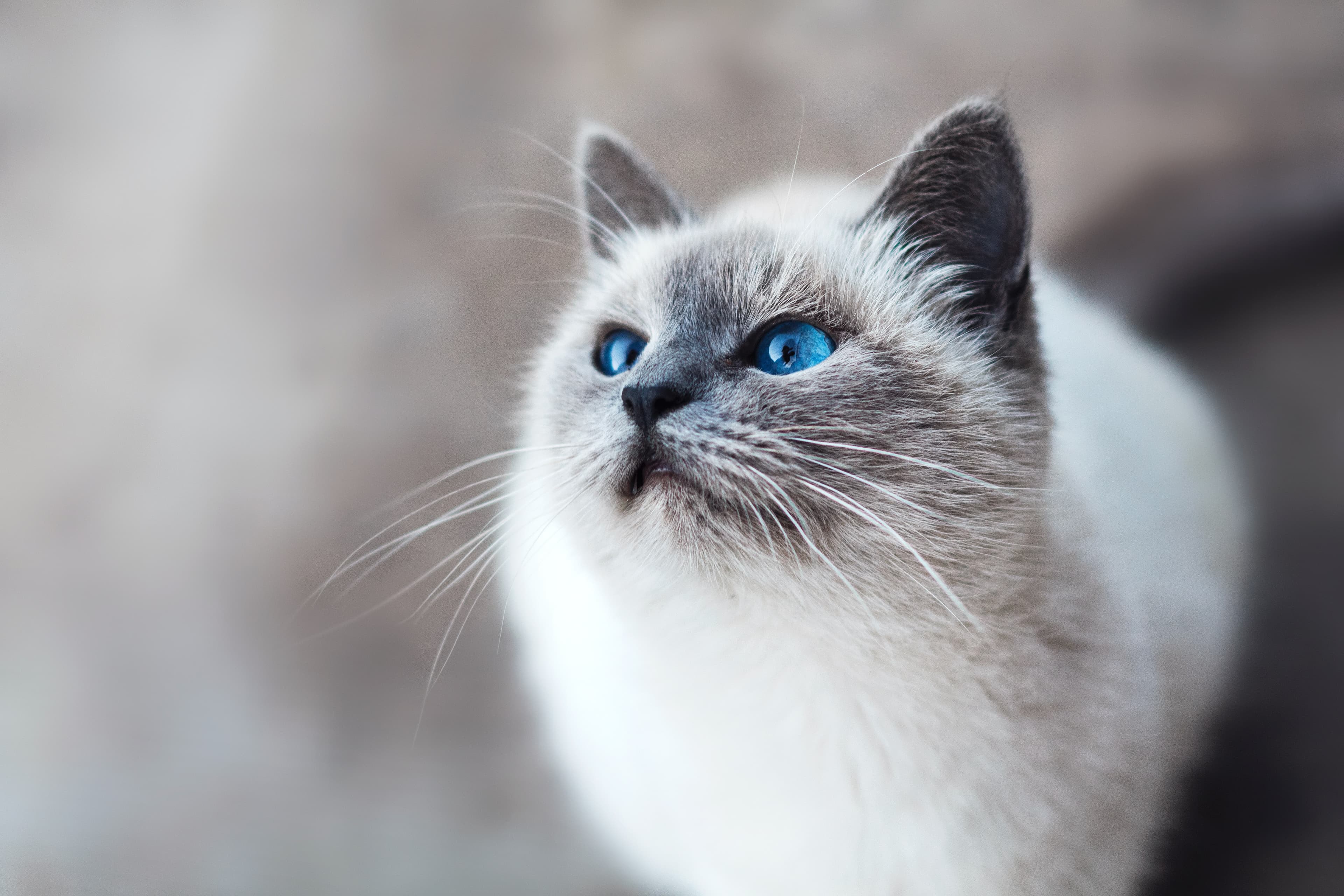Some time ago, it was considered that felines do not distinguish colors. Scientists back in time thought that cats could only perceive black-and-white gradients.
However, today it has been proven that the world around them is by no means monochrome. They distinguish different colors and even color nuances, but some of the shades humans can distinguish are unavailable to them.
So, what colors can cats see?
The answer is: cats can recognize shades in the grey, blue, and green color palette. Especially cats are masters in the grey undertones. It is evolutionarily reasoned grey is the main color of their favorite meal- rodents. Cats see the best grey, green and blue colors.
But here logically appears an opposite question. What colors can cats not see? The answer is: a cat's "blind spots" are red, brown, and orange colors.
Cats are not good at distinguishing between purple, yellow, and even white. These cute animals are inclined more toward blue and green shades. Even the sun in their world vision is green and blue. Still, even here, we have a small clause. Cats don't appreciate all gradients of blue color and can't distinguish light and dark versions.
What makes color so "colorful?"
Special light-sensitive cells (cones) are accountable for perceiving the spectrum's shade. You need a bright light to take advantage of the color perception function fully.
Evolution has endowed the predator with the ability to see and follow prey's trajectory mainly in the dark, so cats have fewer cones than rods - photoreceptors highly sensitive to light.

How does a cat's vision compare to a human image?
Sometimes we tend to unnecessarily "humanize" furry pets. However, from a scientific point of view, everything is explained, although it is amusing to watch their behavior.
Our pupils constrict and dilate depending on the light. Cat's visual apparatus works more perfectly. By the degree of constriction of the pupil, one can also judge the pet's mood and feelings. The cat's eye has a third eyelid that prevents drying out and protects against foreign bodies. It is vital for relatives that live and hunt in the wild.
One of the magic aspects of the cat's possibilities is that they have binocular vision. They can see clearly with both eyes simultaneously due to overlapping fields of view.
It makes the world around them more precise and accurate in attacking the victim. The cat can instantly respond to an object that moves on a horizontal surface. However, they do not see motionless objects very well. The pet can see perfectly in any light, thanks to the vertical pupil.
Despite all this, deep-set eyes in the skull do not allow the cat to focus on side objects. Watching the pet before the jump shows how the cat shakes its head up and down, changing the angle of view and determining the distance to the potential victim. The calculation is entirely accurate.

What are other visual differences between cats and people?
Cats' eyesight works better in dim light in comparison to humans. It is the best lighting for cats due to their crepuscular nature(they prefer to hunt at the time when the sun sets down and rises)
Cats are shortsighted and only see things that are 30-50 meters.
Cats are best at catching with their eyes fast movements and become mostly "blind" when it comes to slow or not moving objects.
Why are cats addicted to watching TV and what they see in it?
Most of all, cats love programs about animals. It doesn't matter if the sound is on or not. They only perceive moving objects well. It is worth switching the program, and the furry pet will quickly lose interest in TV.
How do cats react to their reflection?
It is confusing for pets because they see a moving relative in their territory, yet they can't smell it.
How do they see people?
Four-legged friends perceive us at a distance of 1 to 6 m. Nearby, pets perceive the owner more thanks to the organs of touch and smell. If a person is far away, the pet will see him but instead trust the voice and smell of the owner.

Why do cats see what they see?
Their eyes not only have a mystical-beautiful shape but are also arranged specially, providing a view of up to 2700. A person has a more limited field of vision, although the eyeball's shape is also convex.
And this and other eye features have real reasons that are crucial in survival. Cats are hunters by nature in the first place, then your favorite furry pet. Having a vision that works the best in dim light and observing only the fast and tiniest movements are instruments for getting food and not being eaten by a bigger predator.
But knowledge is also the key- and now you have it. From now you will understand your feline friend better, and it can influence your relationships.
So, next time you are in the pet shop, you will pay more attention to the toys that will be more visible to your cat. And this includes blue, green, and grey toys. And, of course, excludes the red ones.
You will remember all these facts when you will notice how your cat madly runs for the flying insect and how he loses sight of it when the bug stays still.
And also, when you are far from your cat, you will not take offense that he doesn't notice you; you will know that he just can't do it.
Frequently asked questions
What 3 colors can cats see?
Cats can see green, blue, and grey colors.
What does cat vision look like?
Cat's vision is broader than a human's, and cats are shortsighted. World's color palette in a cat's vision is blue-green and grey.
What colors can cats not see?
Cats can't see orange, red, and brown.
Do cats see red or blue better?
Cats don't see red at all and can't see many shades of blue.




